Another version of this archetypical 14th century headdress, which was popular in England, France and adjacent areas.
These crespinettes (also known as crespines or cauls) do not cover the ears, but perch on the temples as a cover for the tightly wound braid knobs of hair.
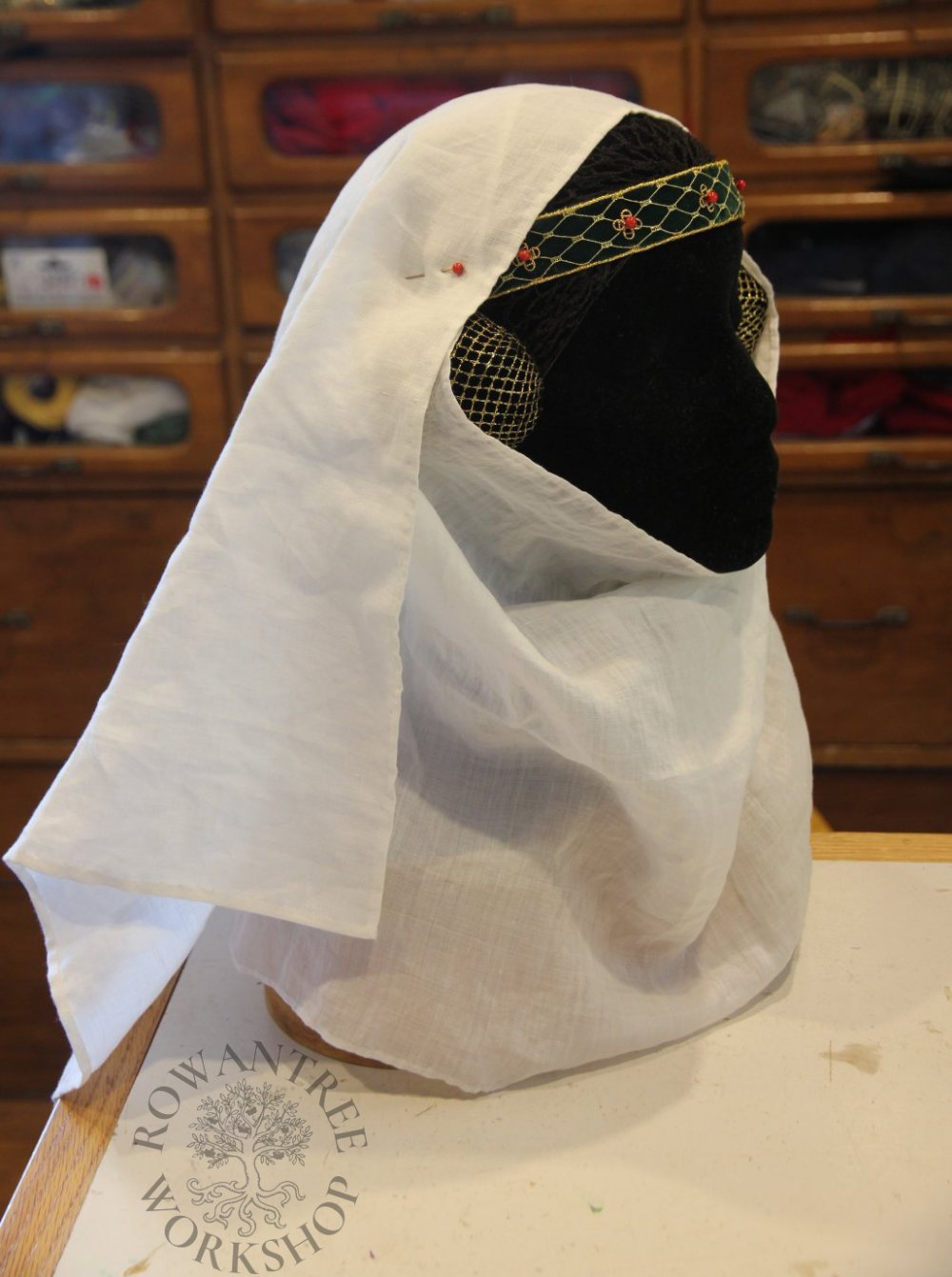
The winner of this Hat Prize requested a 14th century English headdress with crespinettes, fillet, wimple and veil, to disguise her short hair.
Research and Design
Eliza’s description of what she wanted sounded very like the crespinettes I had made for Joan, so I sent her pictures of that headdress, and related source images. These two appealed:
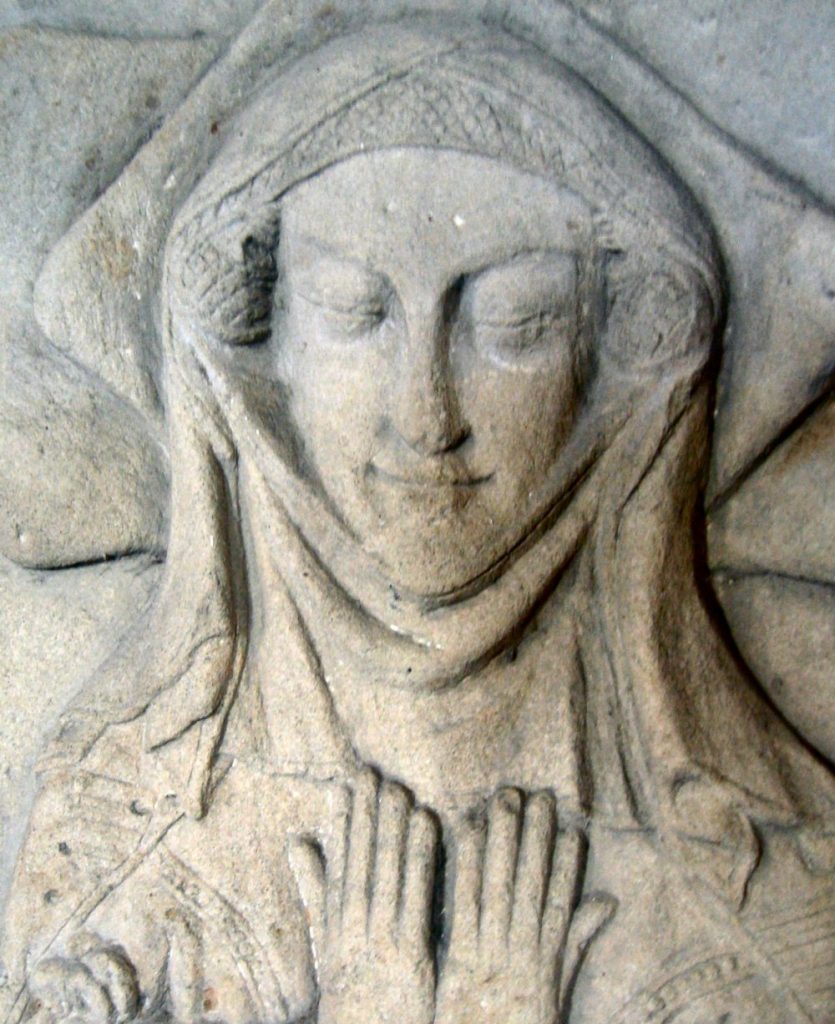
Danby Wiske Parish Church
Source: Effigies & Brasses

St George’s Church
Source: Effigies & Brasses
Eliza wanted the headdress to be made in black, green, gold and some red, along with the white veiling. I had some little gold filigree mounts, which would work well on the fillet. Textiles and Clothing (Crowfoot et al 1992) notes that such mounts were sewn onto fabric fillets.
Since I had already made one headdress in this style, I could re-use the patterns and the moulds for the crespinettes, and follow the same process for making them. The shells are made using millinery buckram, which can be wet moulded. Once dry, I trimmed the bases in a slight curve to follow the face, and wired the edges for strength.
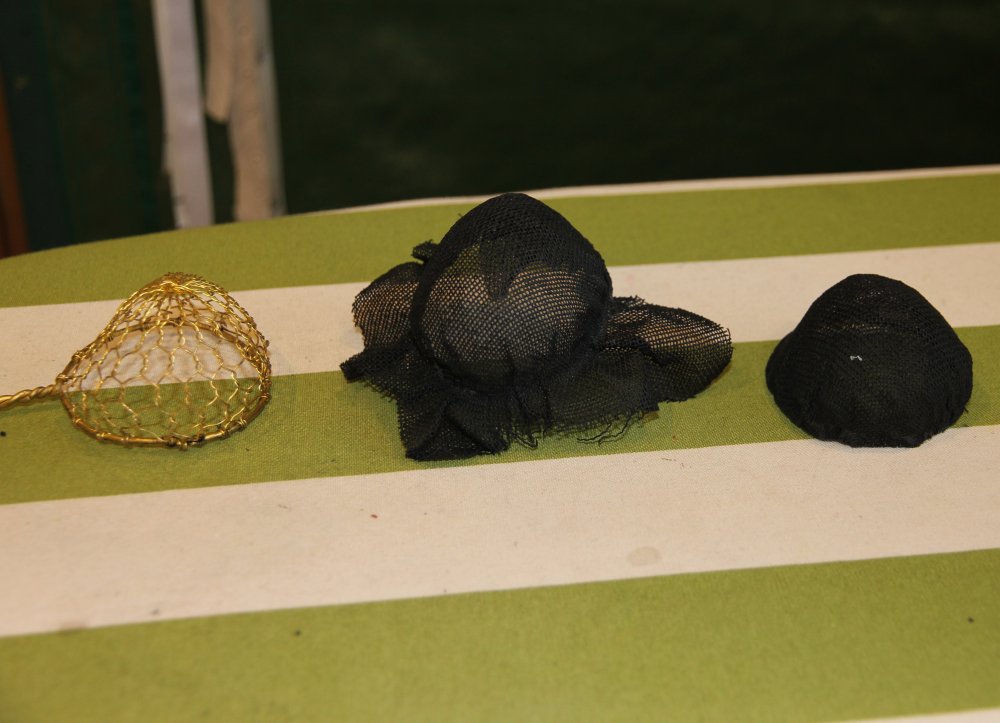
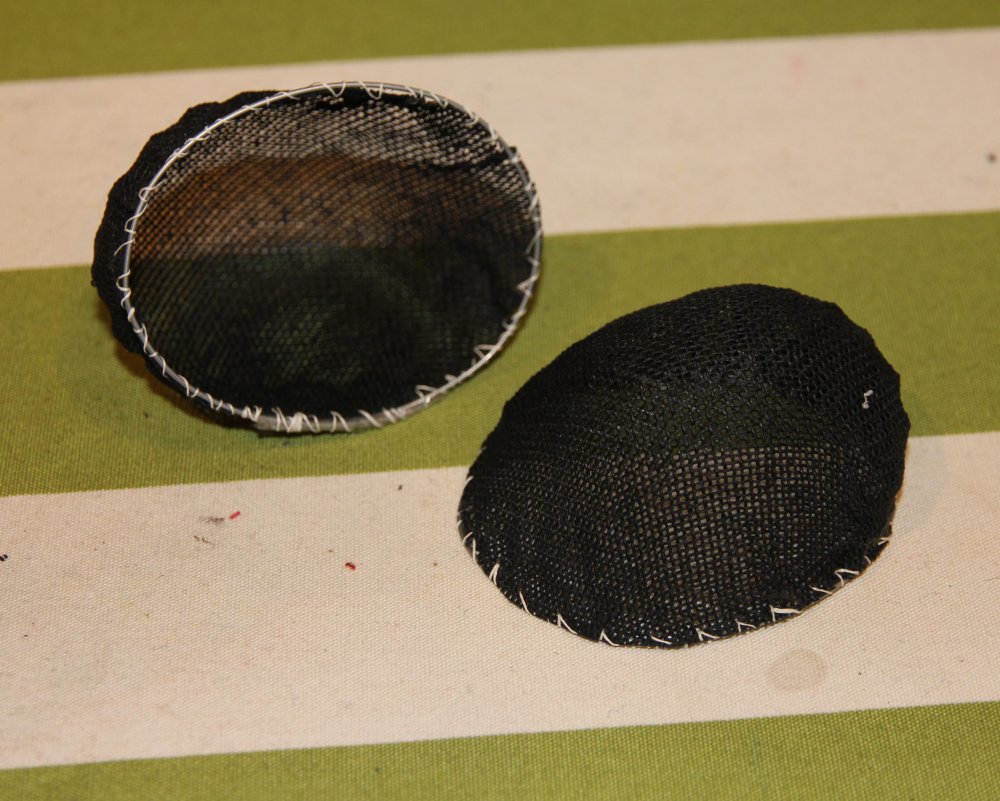
I padded up my headform to the right size, and made a pattern for the fillet in light card. With this in place, I could position the crespinettes and measure the strap to go over the head. This strap feature is seen in several effigies, and provides a practical way to support the weight of the crespinettes . This one is made of black twill tape, which is strong and stable.
I covered the outside of the crespinettes with black velvet (bias cut, in 2 pieces, to deal with the curve), and then with fine gold net, to replicate the look in the effigy. The net stretched well, but it was tricky to try and get it looking even. Once sewn to the edge, I sewed crespinettes to the ends of the straps, then lined them with linen.
On to the fillet. I used some black twill tape as the base, checking the fit against the headform. Then I sewed a circle of green velvet ribbon to fit over the top – on headwear, you always need to work from the inside out, to ensure you don’t make things too small!
I wanted a trellis of gold over the fillet, and considered couching gold jap. I tried several samples to get the effect I wanted – in the end, I used a strip of gold net, which was stiff and required some creative techniques to make it sit evenly! I ended up making a cylinder of card to pin it all on to.

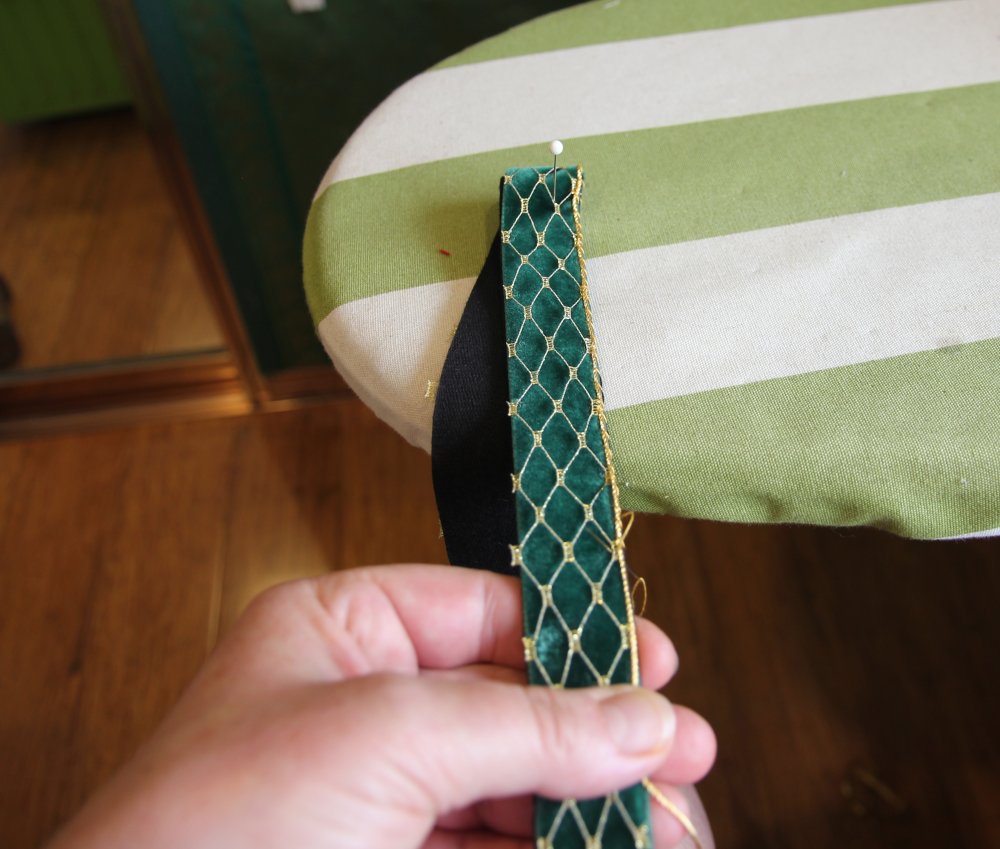
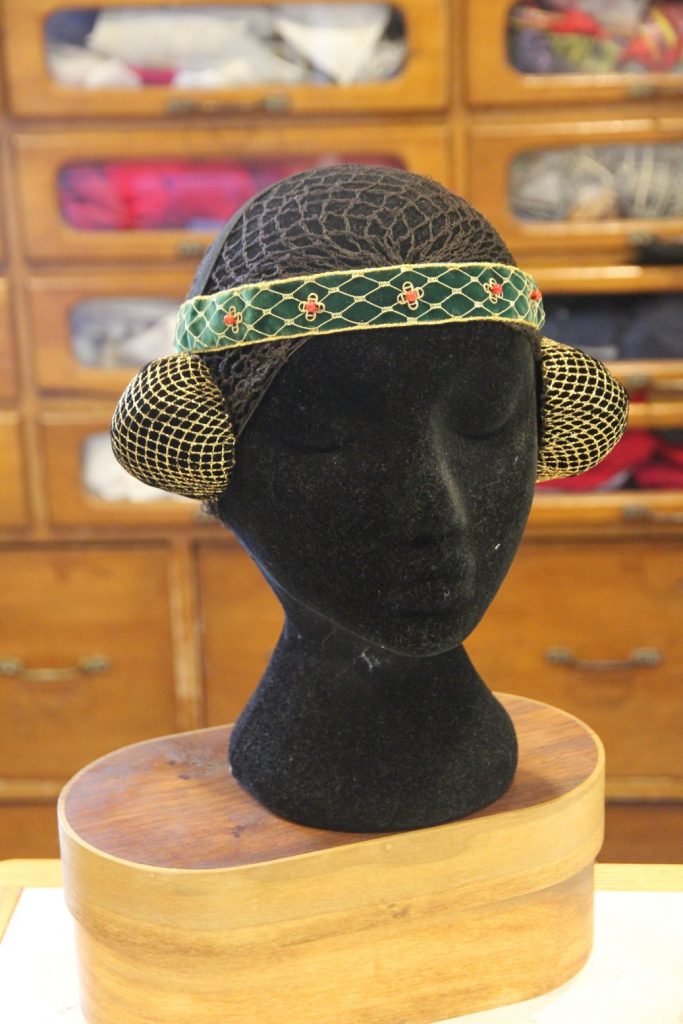
I couched gold twist along the edges and decorated it with small gold filigree quatrefoils and coral beads. Finally, I sewed it to the black twill tape base.
I put the crespinettes set and fillet on the headform, to make sure the balance was right, marked the positions and then sewed the fillet to the band of the crespinettes .
On to the linen! I made a simple wimple and veil as rectangles of fine linen, hand-hemming the edges in fine linen thread.
The headdress can be worn in several combinations, alone or with the wimple and/or veil. A hairnet helps to control and hide short hair. Ideally, this would be knotted in fine silk, but that’s a project all in itself!


Afterthought
Since making these, I have moved away from using wired leno (millinery buckram) – a modern technique. If I was to make another set, I would be exploring other supports, such as moulded felt.

